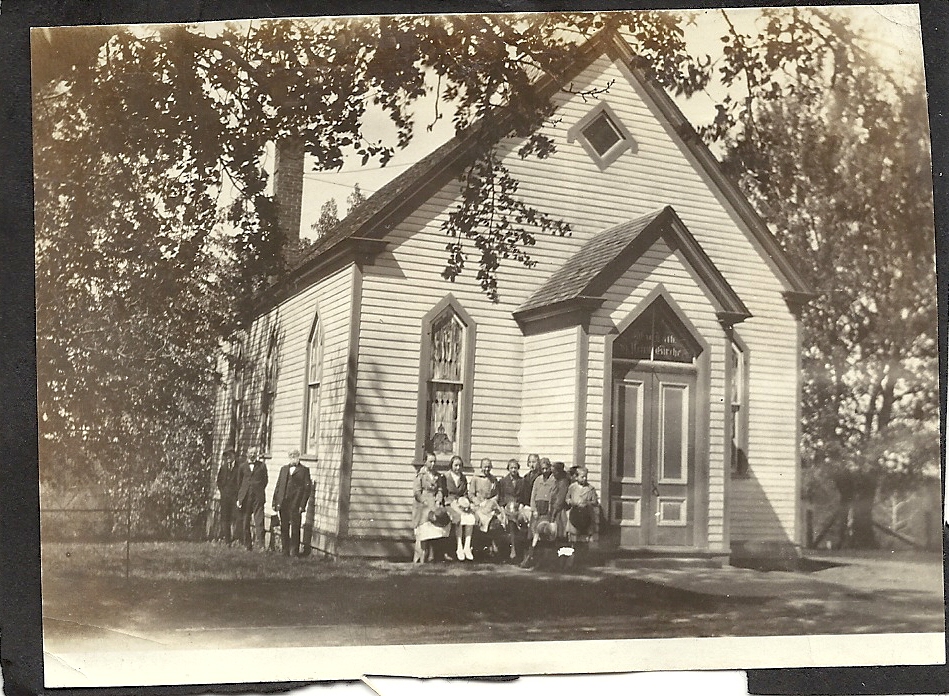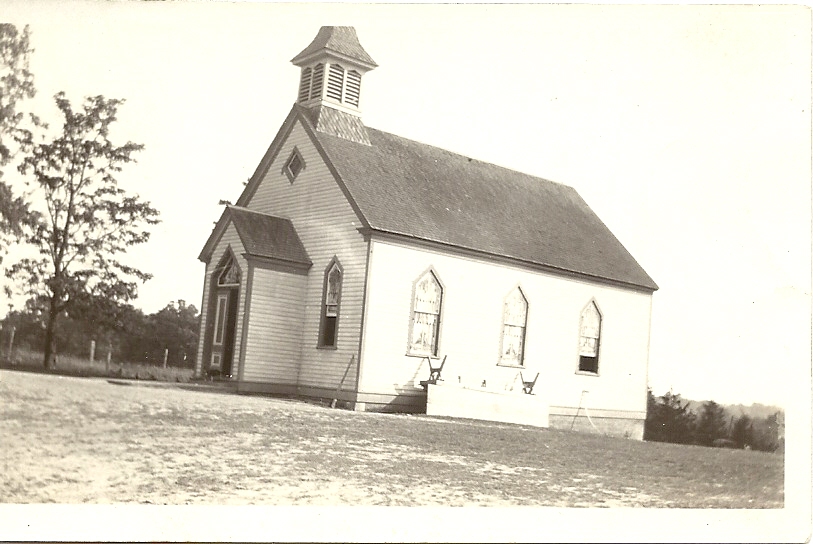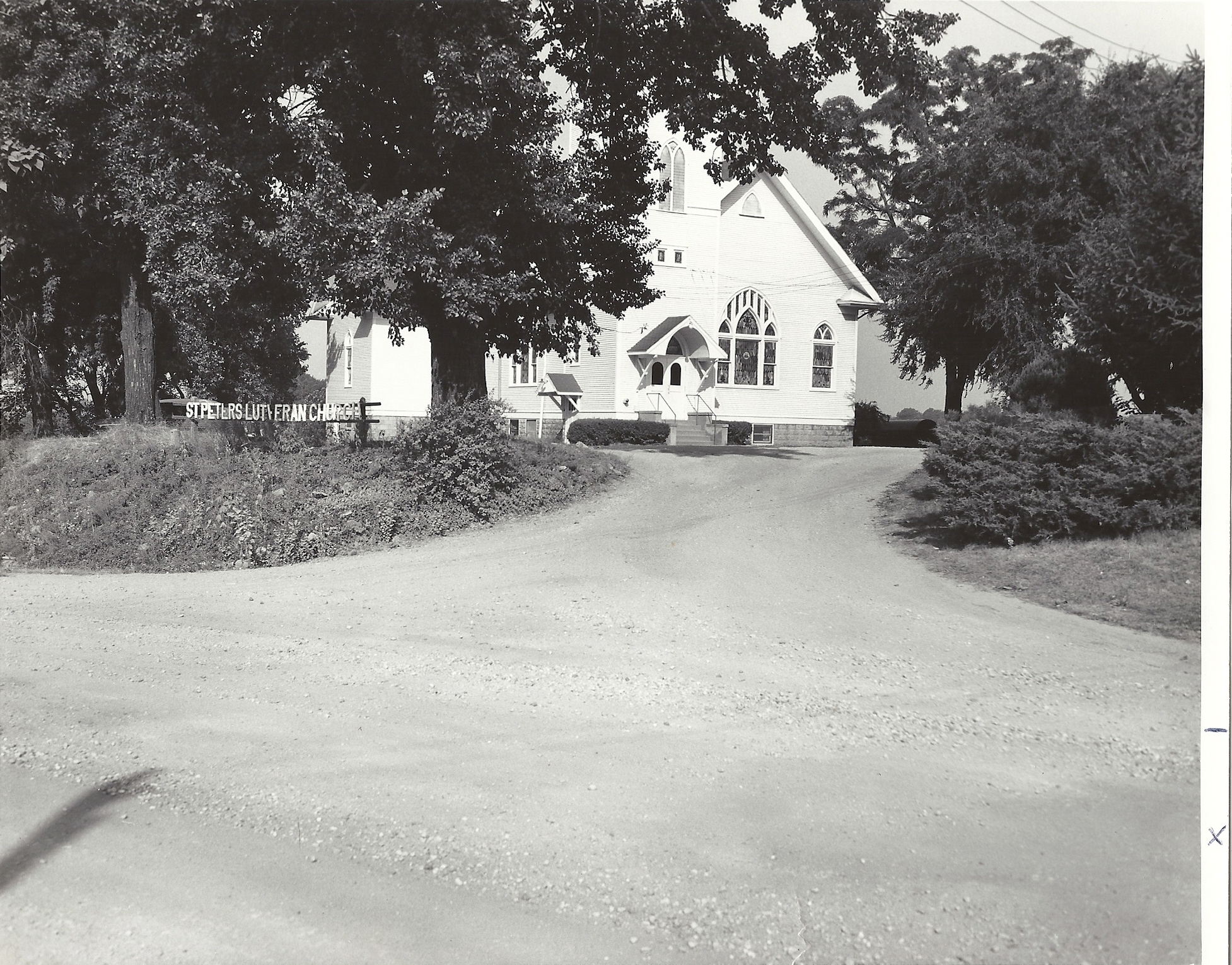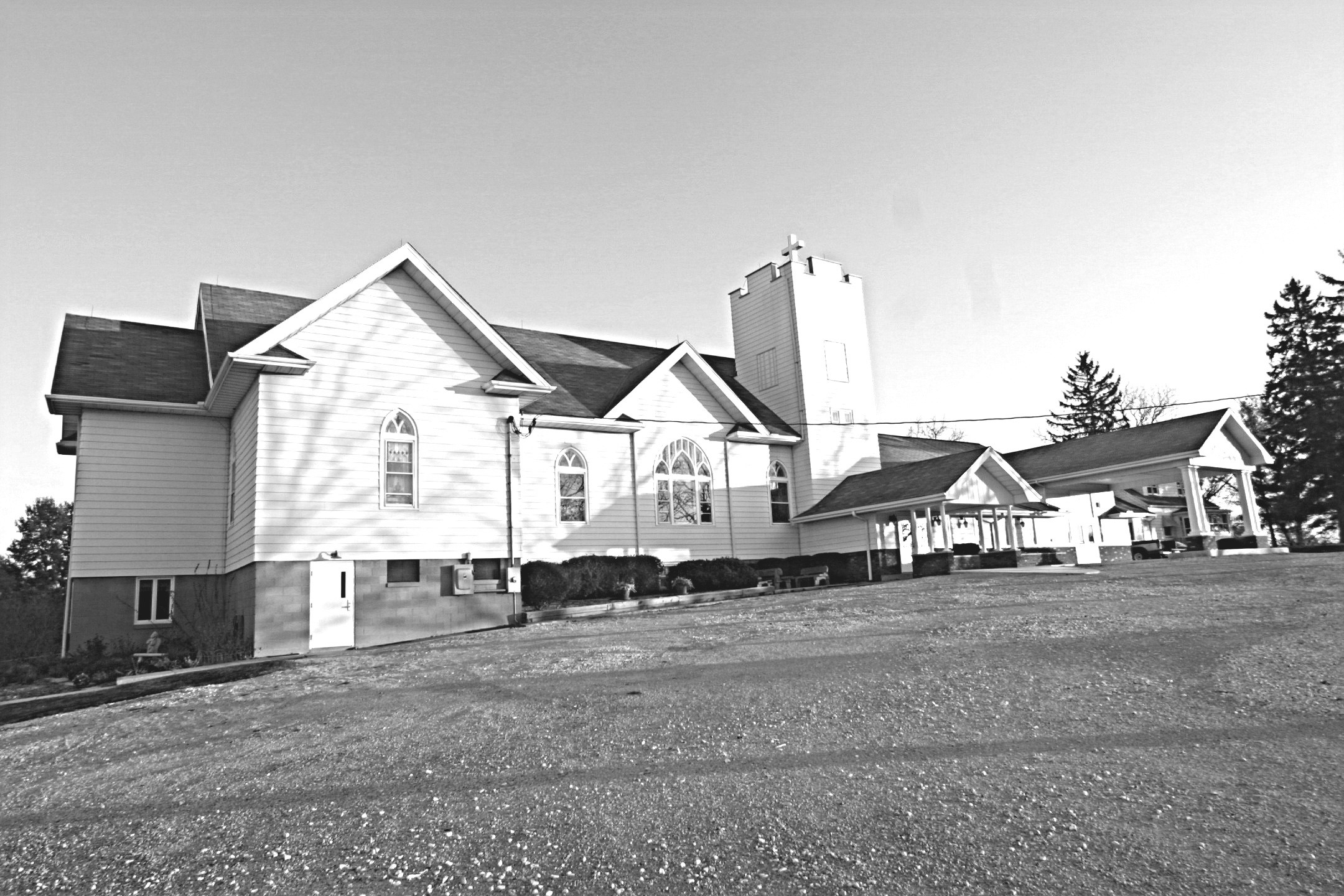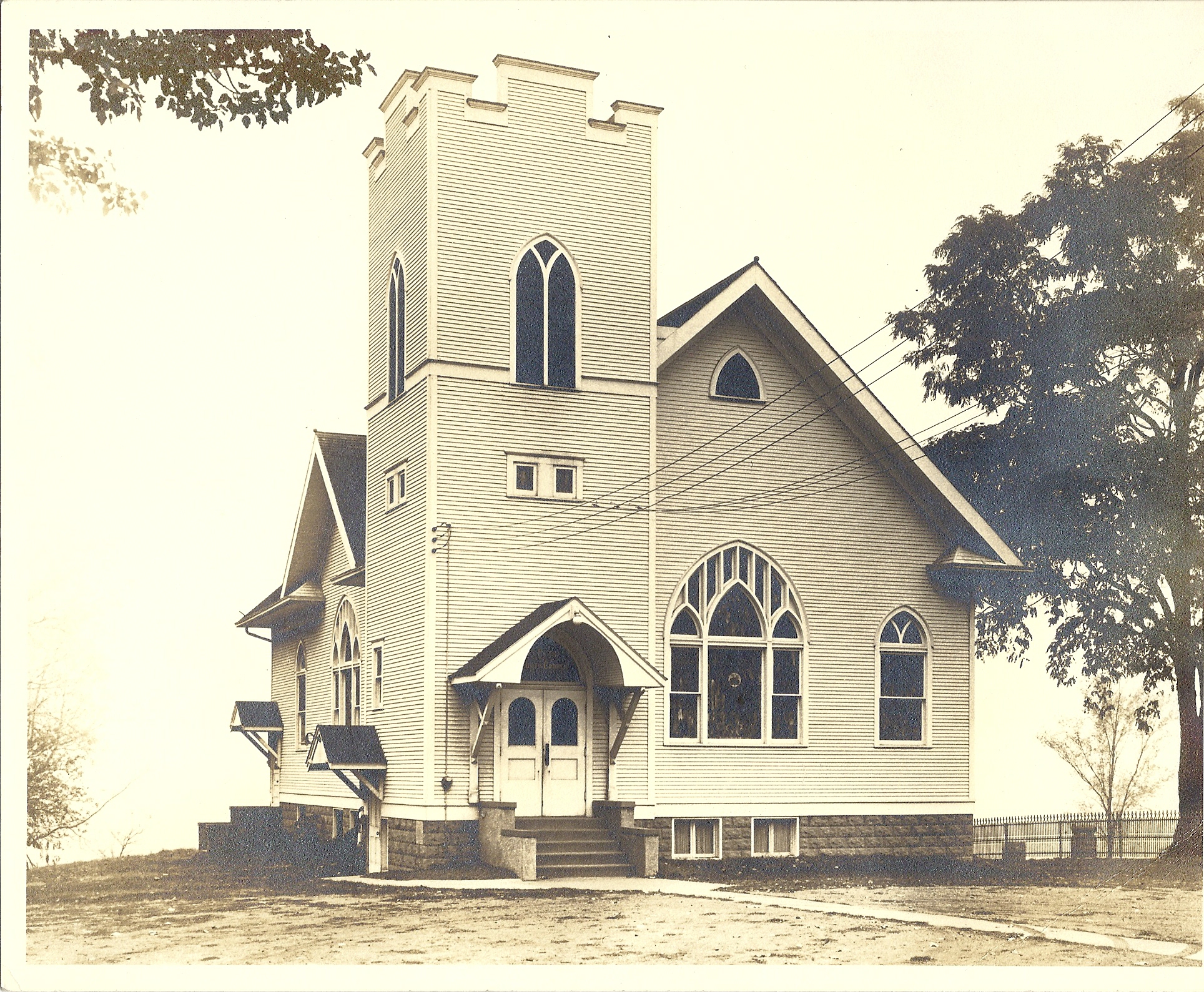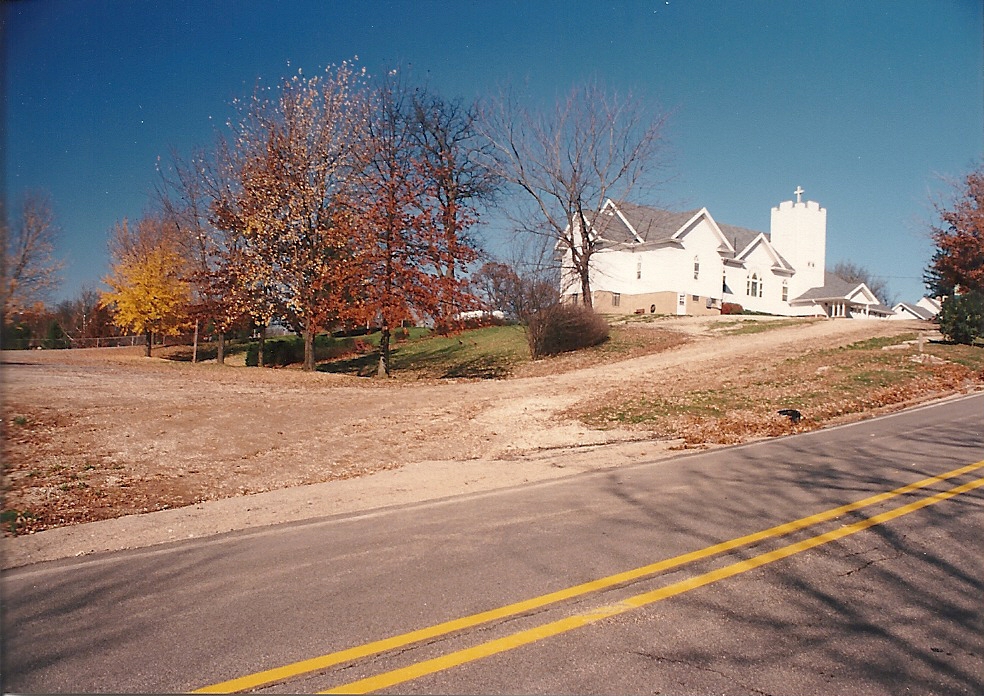Lutherans first came to America to settle in present-day New York and Delaware in the late 1600’s. The first large wave of Lutheran immigrants arrived in the 1740’s, with settlements in New York, the Carolina’s and Pennsylvania. Henry Melchior Muhlenberg, a German immigrant pastor was instrumental in establishing the first Lutheran Church Organization called the Pennsylvania Ministerium. His son, also a Lutheran pastor, fought in the Revolutionary War as a colonel in the 8th Virginia Regiment. Following the War of Independence many waves of German immigrants came to America.
In the early 1800’s Lutherans in America had started to move west, organizing into groups, or synods, as they expanded. The first synod, west of the Alleghenies, was the Ohio Synod, which was established in 1818. This migration across the Alleghenies was joined by other movements up the Mississippi and other rivers into the Midwest. The churches began to spread farther north and west, and the Iowa Synod (St. Peter Church’s antecedent synod) was formed in 1854. Other groups moved even farther west in missions to Christianize the Native Americans.
From the 1870’s to the 1890’s large numbers of immigrants had come to the upper Midwest from Northern Europe. These people had come primarily from Germany, Norway, Denmark and Sweden. In present circumstances, it is difficult to comprehend how they could leave homes, families and friends, knowing that it was unlikely they would meet again in this life. However, they left their homelands for the same basic reasons that people had come to America in the years before and in the years after—religious freedom, escape from military conscription, more opportunities and availability of land. Once in the Midwest they usually joined communities of families and friends that had preceded them. In these ethnic communities it was only natural that they brought their languages, churches and lifestyles with them.
A number of the immigrants were from the western German state of Ostfriesland. They found their way to the Midwest and Peoria through family and friends who had come before them. The area of Harkers Corners became a focal point for many new arrivals. In many instances people were drawn to a certain family or home. One such case was the home of Trientje and Cornelius Riekena, who had come to the Peoria area in the 1860’s and were married in 1873. What had been their family farm is now part of the Lake Camelot subdivision, and some of their descendants are current members of St. Peter. From the home of “Grandma” Riekena, people spread farther west to find jobs, farmland, husbands and wives.
By 1850 there were several Lutheran churches in Peoria, and more attention was being given to the outlying areas. St. John, Bartonville, had been founded as an independent congregation in 1855. Four years earlier, Adam Klaasen (Clauson) arrived in Peoria and settled in Timber Township. As the German population of the area gradually expanded, most were served by the newly formed St. John congregation. Further increases made local services and facilities necessary. Pastor Bess and his associates from St. Paul, Peoria, held services in Saylor School, and efforts were begun to start a new congregation. As a result, St. Peter Lutheran Church was founded in August 1885.
A constitution was written, adopted and signed by charter members John Bruns, Edo Campen, Jacob DeWeerth, Everett Frerichs, Remmer Janssen, Adam Klaasen, Hero Kruse, Frederich Lohr, Cornelius Riekena, Jacob Reis, Henry Uphoff and E. B. VanDettum. Pastor Konrad Flierl was called to lead the new congregation. A church and parsonage were built on land donated by Adam Klaasen.
The first confirmation class consisting of four members was confirmed on Palm Sunday of 1886. They were followed by groups of five and three in 1887 and 1888. As the congregation became established, there was slow, but steady growth. Records show 37 members contributed a total of $283 in 1899. In addition to contributions for “preacher’s salary”, members were required to provide coal and other necessities.
The next Pastor to serve St. Peter was Rev. V. Groth. During his pastorate the east wing was added to the parsonage. The congregation also started its own cemetery. Pastor Groth served from 1888 to 1894.
The church cemetery was started in 1890 on land north of the church. A burial lot cost $15, and the owner provided all maintenance and upkeep. Additional ground was acquired in 1943, 1971, and 1982 to bring the cemetery to its present size. All lots are now under perpetual care and are overseen by cemetery trustees. The earliest tombstone is dated 1891, but other records indicate earlier burial dates. Many of the early members and several pastors lie at rest there.
Pastor Jeremiah Allgaier was called to St. Peter in May 1894, and served until 1911, making his term the longest of any pastors of that time. He was born in Germany but received at least part of his education in America. With energy and determination he led the young congregation forward. He began holding services at Birds Corner for Lutherans in that area, sometimes walking the distance when roads were impassable. Building improvements and remodeling were accomplished, music was given great emphasis; storm damage to the church and school was repaired. Membership climbed steadily, and the vitality of the new congregation, guided in the right direction, provided the foundation for many years of further service and growth.
The successor to Pastor Allgaier was Pastor Kessler. His pastorate was short. He began his duties in July 1911, and departed this life in January 1912. Later that year, Pastor C. Storeck accepted the call and served until 1915.
These new congregations in America showed striking contrast to the rigid state-controlled churches in Germany. Being unable to develop new ideas and ways led many to immigrate to America where the Lutheran church, through its various synods, gave much more freedom to diverse practices while still conforming to the general doctrine of the church. The independence of the individual congregation is one of the outstanding features of this organizational structure, but requires all levels, from the individual member up, to contribute and cooperate for the good of the church as a whole.
All services and meetings were originally conducted in German. This practice would continue for 30 to 40 years and in a limited way for a time after that. Religious education for the children was a high priority. Sunday School was an integral part of the church. Confirmation school was a year-long process, taking precedence over attendance in the public schools. This tended to create conflicts, not unlike the ones still with us today. Some churches tried to avoid this by operating their own school system. This did not prove to be practical in many cases, but some of these schools are still in operation today.
Use of English in services became more common after the beginning of World War I. The second generation American-born members of the church were increasing steadily, and their native language had become English. This second generation began to lead the way in the 1920’s. During this time Pastor J. T. Hossfeld served St. Peter’s from 1915 to 1927. The growing membership of those years exceeded the capacity of the original church building. A drive for funds for a new church was begun in 1920, and construction started in May 1921. The new building was dedicated in October 1921. This structure remains the central section of the present building and was enlarged in 1955 and 1980. In 2000 an addition was added and an elevator installed along with handicap accessible rest rooms. Many improvements and fixtures have been the result of special contributions and memorial funds. Hard economic times hit the farms soon after the new church was completed. The agricultural depression preceded the “crash” of 1929 and continued through the 1930’s. Many pledges of funds for the new church were not able to be met, but eventually the debts were paid.
The first half-century mark of the church was reached in 1935 with Pastor M. Scherf serving the congregation. Records for that year showed 262 baptized and 161 confirmed members. Eighty-five members were considered to be regular contributors. Other rolls indicated 86 in Sunday School, 48 in Ladies Aid and 42 in Luther League. During the year, two marriages and six baptisms were performed. With only small attendance, German services were held on seven occasions.
This congregation reflected the change occurring in the church as a whole. Ethnic differences among various Lutheran bodies diminished in the 1920’s, and a movement was started to unite some of the synods. After several years of discussion, the American Lutheran Church was formed by the merger of the Buffalo, Iowa, Ohio and Texas synods. St. Peter congregation became part of this new body. As the name American Lutheran Church indicated, this was a big step in the unification process that followed the different beginnings.
The changes giving rise to the American Lutheran Church also signaled the end of the “German” church, and the onset of World War II finalized this process. Pastor John Heironymus, who had succeeded Pastor Scherf in 1937, left in 1942 to become an Army chaplain. He was followed by Pastor William Knappe, who was the church’s first American-born pastor. Many of the young men of the congregation served in various parts of the world during the war. Upon their return to St. Peter, some brought wives and families from other areas, helping to broaden the background of the church.
The war had also left the area greatly changed. Nearby factories and towns presented job opportunities to the depression-battered farm families. Although the farm population dropped, remaining farms were enlarged and mechanized, and many of the people working in town chose to live in the rural areas. As many other people over a period of years sought the advantages of suburban and country living, it gave a new dimension to the congregation. It was, and apparently always will be, a challenge to a church to undergo such changes and continue to serve a community. Many other congregations have survived even more radical changes.
The post-World War II period brought a “baby boom” to St. Peter as well as to the rest of the country. A quick glance at the pictures in the 75th Anniversary booklet will bear this out. To serve especially the increasing numbers in the Sunday School, the first addition to the church was constructed in 1955. As well as adding seating capacity and office space, much needed room in the basement was provided for the Sunday School and a modern kitchen. In 1947 Pastor Knappe was obliged to retire because of illness. In this post-war period Pastor Martin Bieber served from 1947 to 1955 and Pastor Alfred Kalkwarf from 1955 until his death in 1963. They were followed by C.J. Kumpf, who was pastor until his retirement in 1971.
As the congregation grew, so did the Lutheran Church as a whole. Various church bodies began working in close cooperation on issues affecting all of them. After a number of years spent studying the proposed plans, a merger of the American Lutheran Church with Norwegian, Swedish and Danish organizations was accomplished, creating the American Lutheran Church.
Various programs were started to meet the needs of our young people. More emphasis was put on Bible School and other educational and outreach programs. A Board of Parish Education was put in place to supervise this area of church activities. Confirmation instruction has been lengthened and made more flexible. Whenever practical, adult instruction classes have been made available for prospective members.
Although now somewhat changed from past practices, mission and outreach programs have always been carried out. The three-service Mission Fest Sunday is no longer on the calendar. Benevolence gifts are now part of the budget.
The 1960’s and 1970’s were a time of continued growth in membership numbers, and leadership passed to Pastor David Siberg (1971-1977) and Pastor Dale Houck (1977-1985). From 1986 to 1993 Pastor Floyd Anderson served St. Peter Lutheran. A merger of the American Lutheran Church, Lutheran Church of America, and American Evangelical Lutheran Church had been proposed and in January 1988 this was accomplished, creating the Evangelical Lutheran Church of America. The ELCA as it is known today brought changes. Ladies Aid is now Women of the Evangelical Lutheran Church of America (WELCA), Luther League changed to Lutheran Youth Organization (LYO); also added was a Junior Lutheran Youth Organization (Jr. LYO). Both the LYO and Jr. LYO have been very active and helped bring the youth into the church.
The years from 1989 to 1993 brought changes to the grounds around the church. In 1989 acreage across Todd School Road was donated by Alberta and Harland Fischer for possible use as a parking lot. Alberta is the great granddaughter of Adam Clauson who donated the original land for the church. After the survey was made and all legal work done it was brought to our attention that the County was proposing to change the road and bridge on Todd School Road. This would take the land across from the church. The County proposed in exchange for the land the County would enlarge the parking lot around the church. This not only added more parking spaces but the landscaping has beautified the grounds.
The Cemetery Committee reported to the Council the status of the cemetery. Most of the plots were sold and they proposed to enlarge the cemetery to the west. One section of the cemetery has been plotted off for Cremation Gardens. In 1986 Ray Hammerich, in memory of his wife Mary Lou, installed brick pillars at the entrance to the lower road of the cemetery. In 2004 a granite bench was placed overlooking the serene valley with an inscription, “A Place of Peace, Silence and Comfort”, Dedicated to The Glory of God by Arthur Pille family, Robert Pille family. In 1994 Pastor Earl Henderson accepted the call to St. Peter Lutheran. There was much discussion on adding another addition. In 1998 and 1999 there were committees set up to do the planning.
In June 1999 Pastor Henderson retired from the Ministry and Pastor John Schurter accepted the call. On June 4, 2000 Pastor Schurter was ordained and installed at St. Peter Lutheran Church, continuing until 2009.
Also on June 4, 2000 a ground breaking ceremony was held at St. Peter Lutheran Church to begin a new project: “2000 Improvements”. The project was completed and dedication services were held at the church worship service, January 21, 2001, with an open house held that afternoon. Improvements for the 2000 facility included an elevator providing handicap accessibility to both levels of the church. New restrooms were installed and the Upper Room was expanded to accommodate meetings, gatherings, social activities, etc. The interior of the church chapel underwent a complete facelift, including painting. Church pews were moved to the basement where services were conducted while floors were refinished. At the time of the dedication all pews were back in their original place and the floors are bright and shiny with new carpeting covering to the altar and side aisles. The covered drive-through portico at the church entrance has proved to be a great asset for members and friends arriving or departing services.
Mutual Ministry Committee was formed in 2001. The function of this committee is to provide spiritual care and the overseeing for both congregation and pastor.
The kitchen was in need of an updating and WELCA took on the project. New cabinet fronts were put on, new sinks installed, and the tile floor was stripped and made to look new.
Along with the new addition, the parking lot and roads into the cemetery were blacktopped. By 2010 all debts for the expansion, additions, and improvements were paid in full.
In 2010 St. Peter Lutheran Church of Glasford, Illinois celebrated its 125th Anniversary, and welcomed Interim Pastor, Jill Flynn.
Pastor Jill Flynn served as Interim Pastor from 2010 to November 2011, when Pastor Harlan Kaden was installed. He came to St. Peter with a history of mission work in Nigeria, and a passion to maintain a mission course. When the ELCA was formed in 1988 the Central/Southern Illinois Synod of the ELCA was chosen to partner with and support two synods of the Madagascar Lutheran Church. In 2013, the St. Peter congregation eagerly embarked on a Madagascar Mission program, and by 2016, the church had planned, collected, and designated large contributions to the two Madagascar synods, and continues to do so routinely. All the while, giving for local, state and national objectives has never diminished.
As we reflect back over the past 140 years of St. Peter Lutheran Church, there have been many changes. From horse and buggy we have progressed to hybrid cars whose routes are charted by global satellites. From isolated farms of Illinois now we can communicate internationally by laptop computers or smartphones to most corners of the world. Technology puts messaging, media and information at our fingertips. Yet, our church on the hill teaches that our greatest source of information has always been and always will be Our Lord Jesus Christ of the Bible, where love, strength and hope abound. Our church on the hill endures and calls everyone to come to worship.
